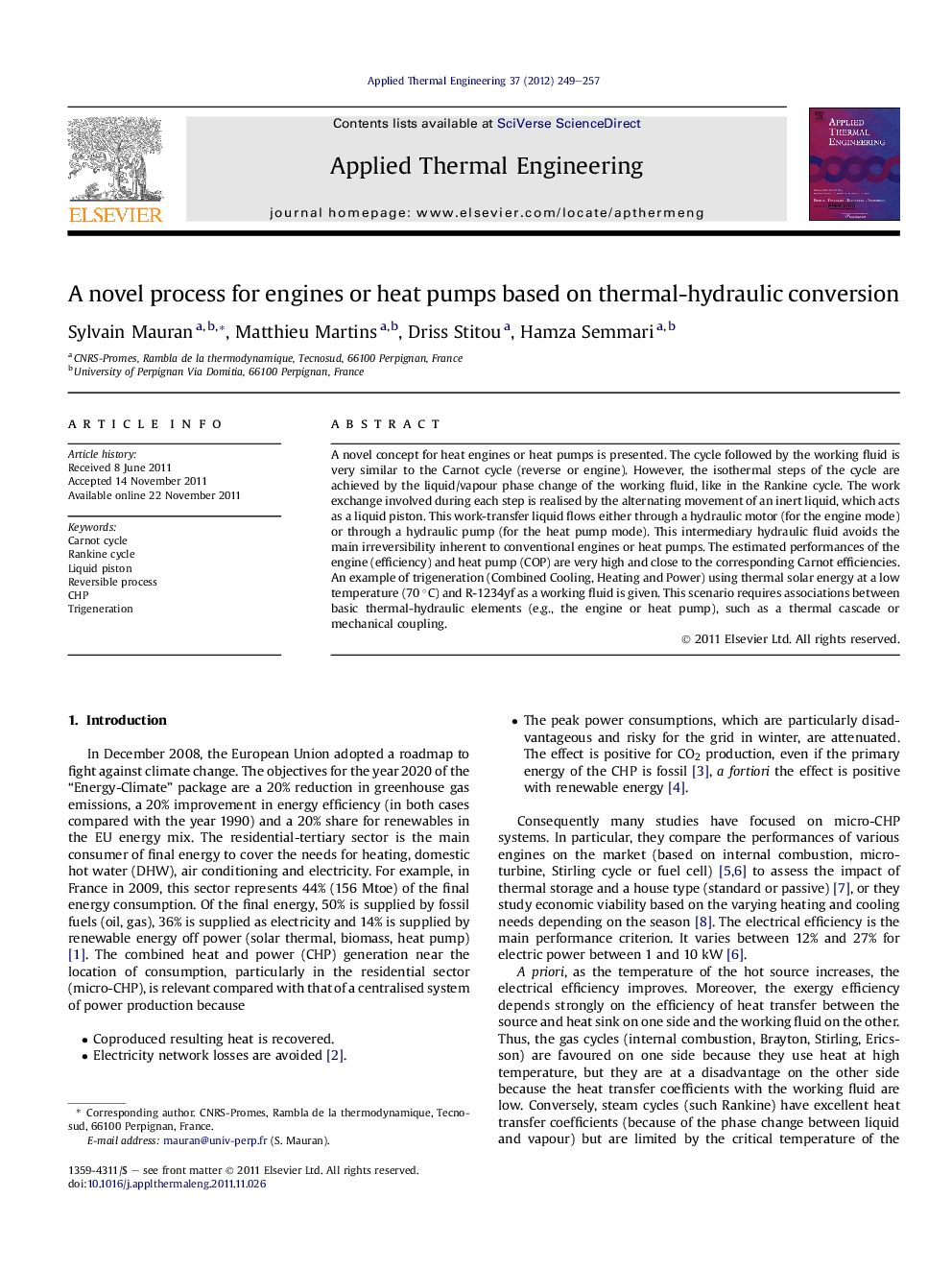| Article ID | Journal | Published Year | Pages | File Type |
|---|---|---|---|---|
| 647434 | Applied Thermal Engineering | 2012 | 9 Pages |
A novel concept for heat engines or heat pumps is presented. The cycle followed by the working fluid is very similar to the Carnot cycle (reverse or engine). However, the isothermal steps of the cycle are achieved by the liquid/vapour phase change of the working fluid, like in the Rankine cycle. The work exchange involved during each step is realised by the alternating movement of an inert liquid, which acts as a liquid piston. This work-transfer liquid flows either through a hydraulic motor (for the engine mode) or through a hydraulic pump (for the heat pump mode). This intermediary hydraulic fluid avoids the main irreversibility inherent to conventional engines or heat pumps. The estimated performances of the engine (efficiency) and heat pump (COP) are very high and close to the corresponding Carnot efficiencies. An example of trigeneration (Combined Cooling, Heating and Power) using thermal solar energy at a low temperature (70 °C) and R-1234yf as a working fluid is given. This scenario requires associations between basic thermal-hydraulic elements (e.g., the engine or heat pump), such as a thermal cascade or mechanical coupling.
► Two types of Carnot engine or heat pump with liquid piston are detailed. ► The first type process is the best cost-effective compromise. ► A multipurpose process (engine or heat pump) is possible. ► Performances of trigeneration: 15% for power conversion, 1.3 for COPh, 0.5 for COPr.
